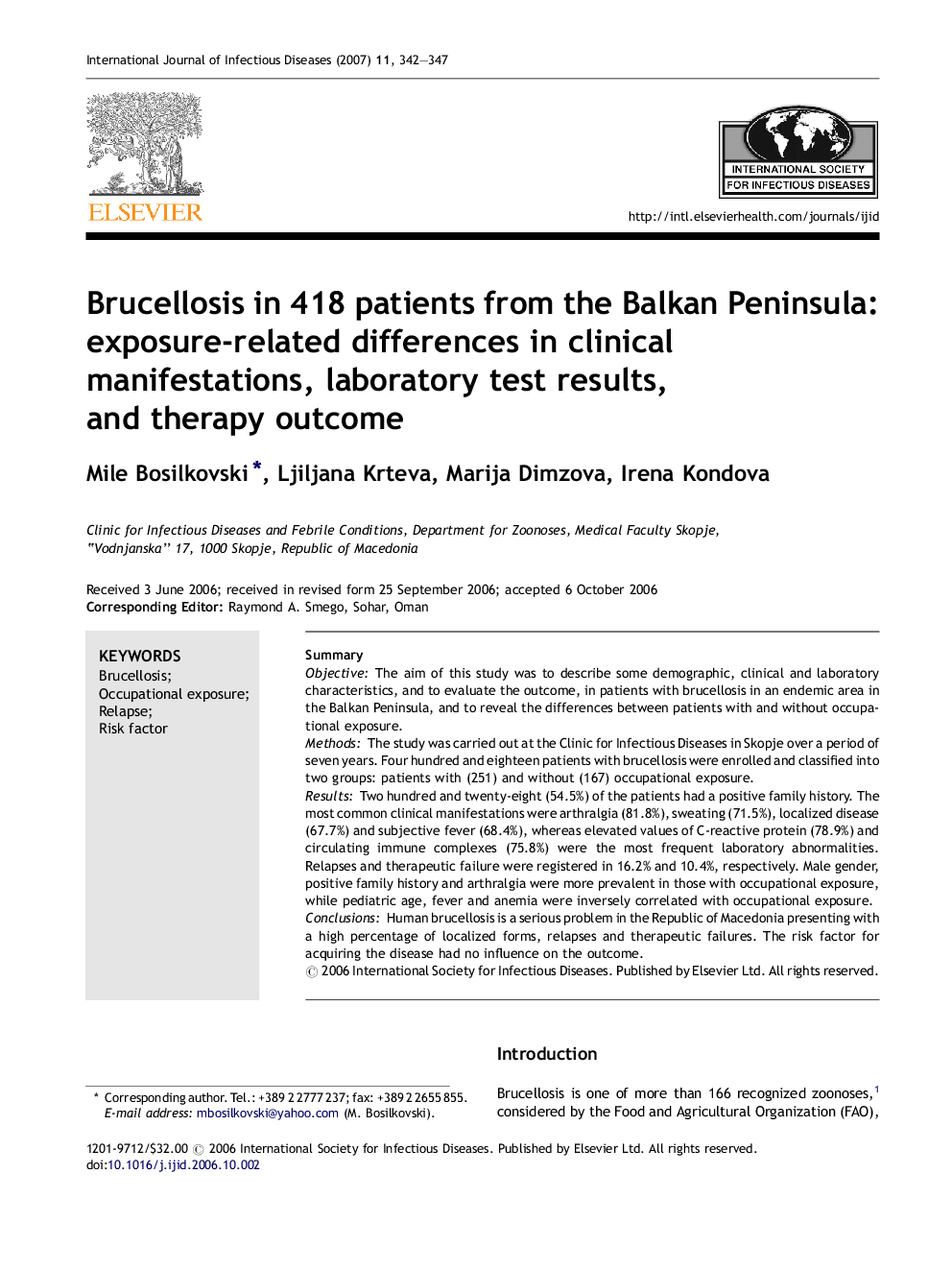| Article ID | Journal | Published Year | Pages | File Type |
|---|---|---|---|---|
| 3365155 | International Journal of Infectious Diseases | 2007 | 6 Pages |
SummaryObjectiveThe aim of this study was to describe some demographic, clinical and laboratory characteristics, and to evaluate the outcome, in patients with brucellosis in an endemic area in the Balkan Peninsula, and to reveal the differences between patients with and without occupational exposure.MethodsThe study was carried out at the Clinic for Infectious Diseases in Skopje over a period of seven years. Four hundred and eighteen patients with brucellosis were enrolled and classified into two groups: patients with (251) and without (167) occupational exposure.ResultsTwo hundred and twenty-eight (54.5%) of the patients had a positive family history. The most common clinical manifestations were arthralgia (81.8%), sweating (71.5%), localized disease (67.7%) and subjective fever (68.4%), whereas elevated values of C-reactive protein (78.9%) and circulating immune complexes (75.8%) were the most frequent laboratory abnormalities. Relapses and therapeutic failure were registered in 16.2% and 10.4%, respectively. Male gender, positive family history and arthralgia were more prevalent in those with occupational exposure, while pediatric age, fever and anemia were inversely correlated with occupational exposure.ConclusionsHuman brucellosis is a serious problem in the Republic of Macedonia presenting with a high percentage of localized forms, relapses and therapeutic failures. The risk factor for acquiring the disease had no influence on the outcome.
